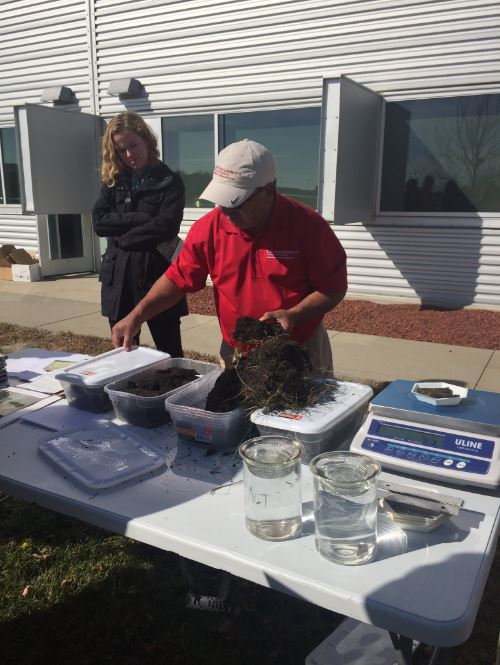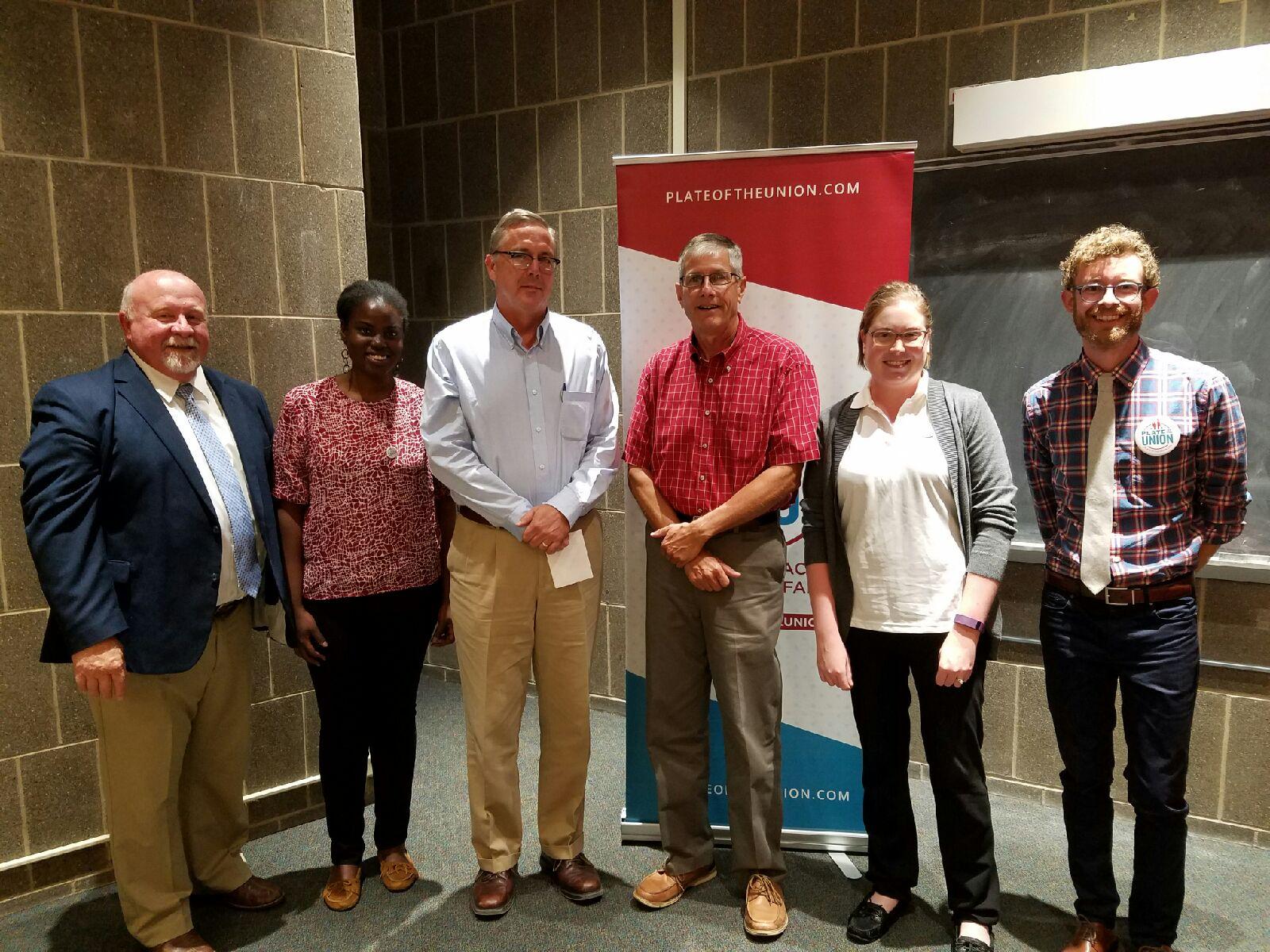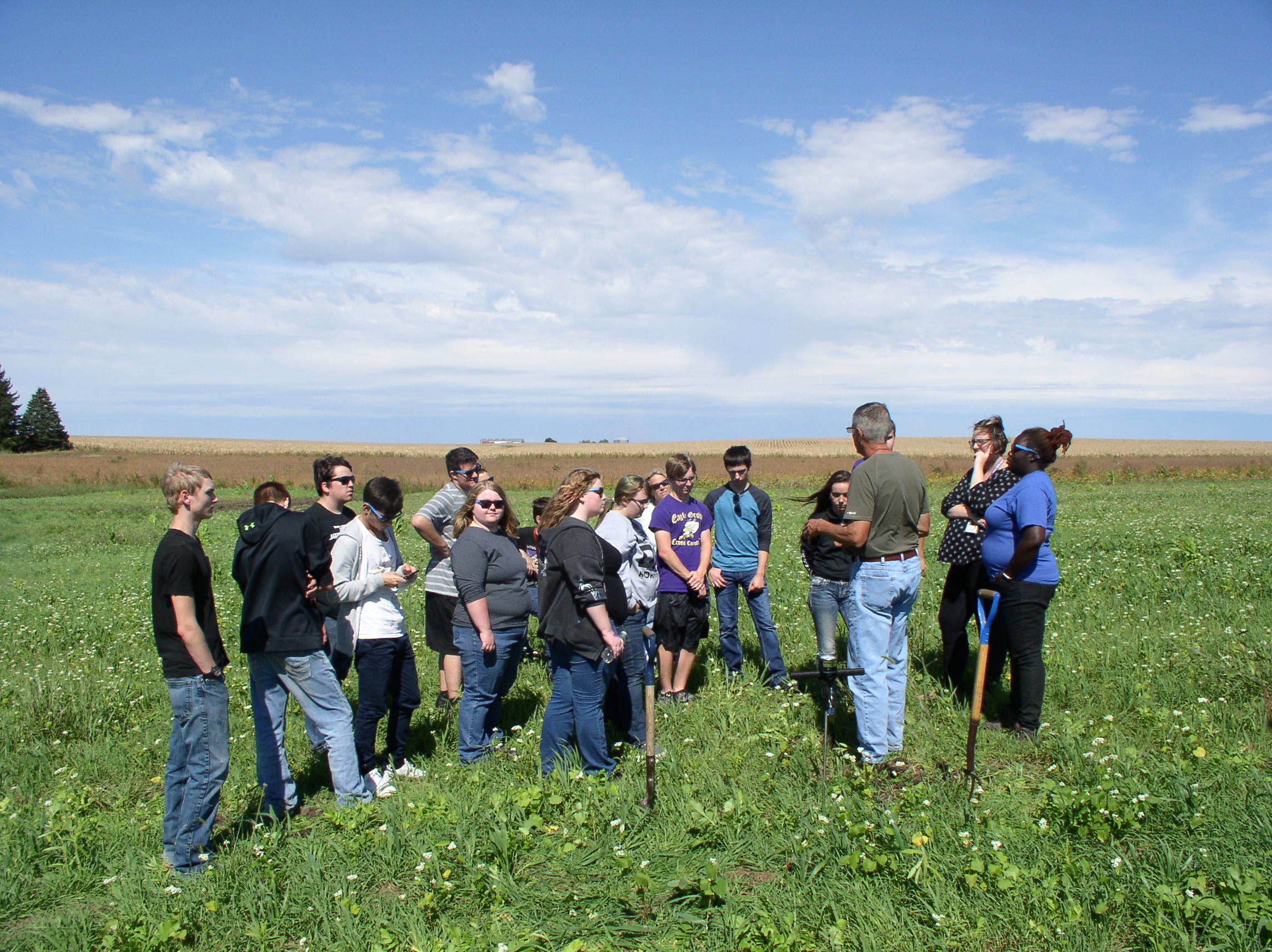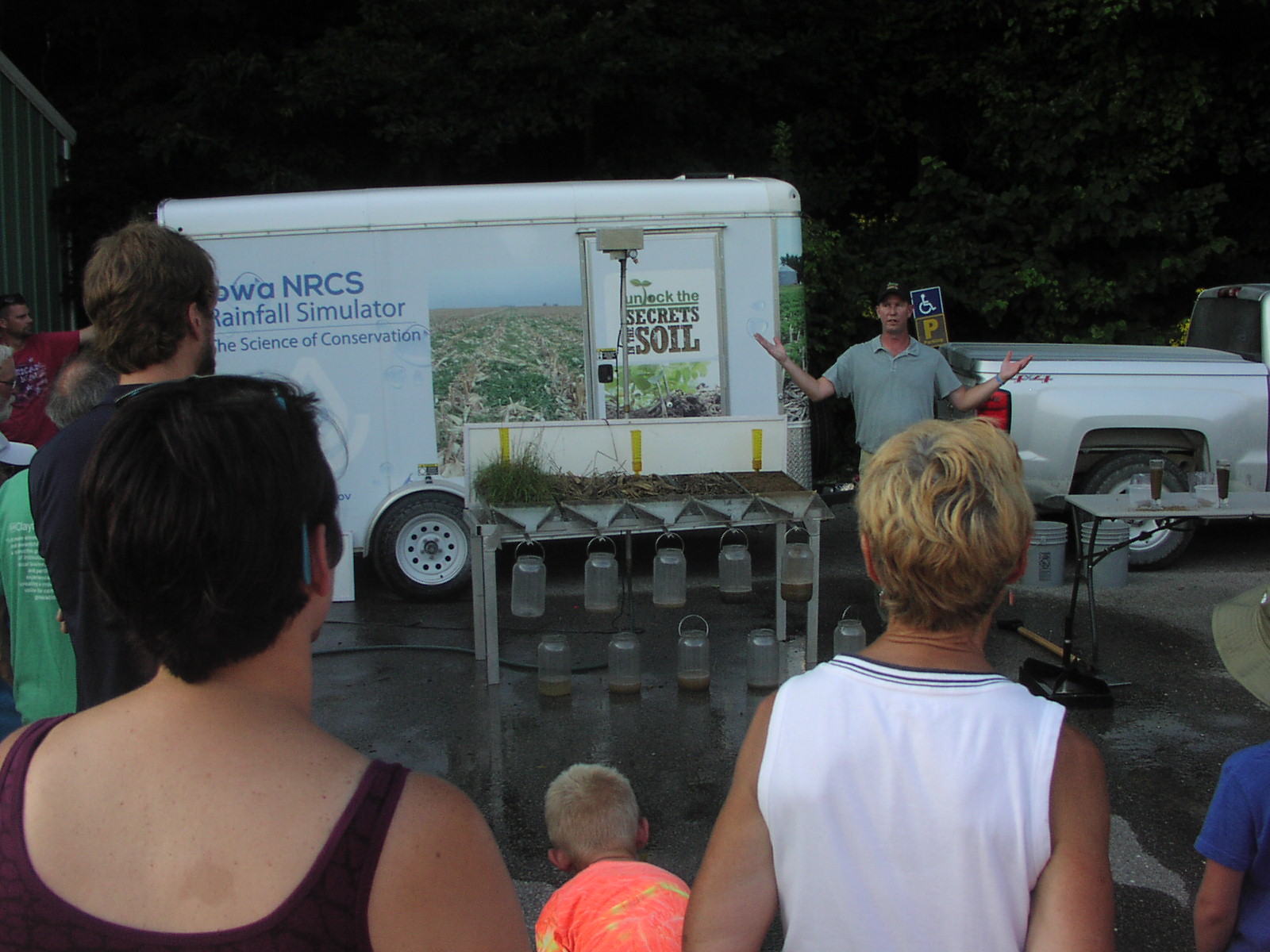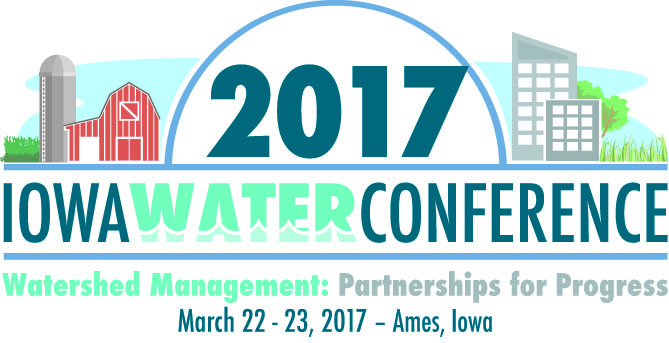A few weeks ago, approximately 70 Iowa-based water professionals came together for the Watershed Academy. This two-day event was co-organized by Iowa State University Extension & Outreach, Conservation Districts of Iowa, the Soil and Water Conservation Society, Iowa Department of Agriculture and Land Stewardship, and the Natural Resources Conservation Service. The Academy sought to provide the latest information on conservation practices and educational resources.
Continue readingIowa Water Center Spirit of the Water Essay Contest now open!
Without water, there would be no life. Water serves as a medium in which we can grow healthy plants, innovate in industry, and play in the outdoors. From supporting our natural habitats to running through our kitchen faucets, it allows us to flourish as a community of living beings.
Continue readingCedar River Watershed Coalition Meeting Recap
On Friday, October 29, I had the good fortune of heading northeast to Parkersburg, Iowa for the Cedar River Watershed Coalition’s Fall 2016 meeting. This group has been convening since February of 2010, and I’ve made it to a few meetings in my time at the Iowa Water Center.
Continue readingPlate of the Union Water Quality Panel Discussion
This year, the Iowa State University Sustainable Agriculture Student Association (SASA) received a national grant from the Plate of the Union Campus Challenge. Part of this sponsorship included hosting a panel on water quality issues
Continue readingGet to know the Daily Erosion Project
Answering a speaking request from the Nebraska Natural Resource Districts, I delivered a talk last week in Central Nebraska. Kearney, Nebraska to be more exact. Kearney is located deep into the irrigated area of the Great Plains, and so I wondered a little – actually more than a little – why this group would be interested in my focus area of soil erosion. More specifically, why they would be interested in hearing about our Iowa State University project called, The Daily Erosion Project.
Continue readingEagle Grove Students Learn about Conservation Practices on the Farm
Eagle Grove, IA – On September 20th, the Earth Science class from the Eagle Grove High School took a field trip to a farm operated by Tim Smith. Smith, a White House Champion of Change for Sustainable and Climate-Smart Agriculture, showed how he incorporates cover crops, strip tillage, and a bioreactor into his farm operation. Students also traveled 12 miles north of his farm to tour a wetland CREP site. Tim, along with Bruce Voigts and Tas Stephen from the Natural Resources Conservation Service (NRCS) in the Clarion USDA office, discussed how the benefits these practices add to soil health and water quality.
Continue readingFarmers Connect Conservation to Water Quality at Big Spring
Elkader, IA. – On August 10th, fifty farmers from the Upper Roberts and Silver Creek Watersheds enjoyed an evening of family fun at the Big Spring Trout Hatchery along the Turkey River near Elkader. The Second Annual Landowner Appreciation Day allowed farmers and their families to follow the path of water that drains from their land to where it reemerges at Big Spring.
Continue readingIntroducing a New Member to the Iowa Water Center Team
Hanna Bates joined the Iowa Water Center at the end of August as the Program Assistant. In this position, she will administer our grants program, assist in planning our education and outreach events, and assist in facilitating the relationship between water-related researchers and the public.
Continue readingIWConf17 presentation applications are due (really) soon
If you’ve been putting off submitting an application to present at the 2017 Iowa Water Conference, put it off no longer – applications are due Sunday night (Aug 14) at 11:59 p.m. The IWConf17 planning committee will review in the weeks following as the “first cut” for determining the 2017 conference agenda.
(It’s okay if you wait until Sunday to submit. It’s not procrastination. You’re busy. It’s prioritization.)
Wondering if you should submit an application? Do you answer yes to any of the following questions?
-Do you have a story to tell about watershed successes?
-Are you looking for partners for a current or new project?
-Do you have the latest tool in your water management field with proven results?
-Have you figured out a way to engage new sectors of populations in water-related activities or conversations?
From the call for applications:
The Elixir of Life: An Invitation
Guest blog by Jodi Enos-Berlage, Biology Professor at Luther College in Decorah, Iowa
Water—one of the simplest molecules on earth, is the basis for all life, and this requirement is non-negotiable. The great mystery then, is how we humans have allowed this sacred molecule to become the most polluted substance on earth, and what we should do to solve this problem.
Six years ago, an ISU Extension representative called me to ask if I would be interested in leading a water quality monitoring effort in an impaired waterhshed in Northeast Iowa. I was a scientist and an educator who grew up on a farm. I had read about the many water quality problems in Iowa. In fact, I lived in this impaired watershed, and knew my farm might be contributing to the problem. I said yes.
What began as project to collect water quality data evolved into something much bigger—sharing data and forming relationships with local farmers, using that data to secure funding for water quality improvement practices, developing a three-week, water-focused laboratory in my microbiology course, six years of water quality research involving over 15 undergraduate students, eight presentations and publications, and finally, an amazing collaboration with a dancer, a musician, and a cinematographer at Luther College that resulted in Body of Water. I now invite you to experience this unique work.
Body of Water is an original, unique performance that intermixes dance, music and video components. Art and science are intentionally interwoven to create an end product more powerful than the sum of its parts. The overall goal was to reveal the sacredness of this essential molecule and elixir of life. No one in our group was aware of a precedent for this type of performance, so it was a real experiment. While the videos, many of which I narrate, tell the story of the essentialness of water for life, its geographic connectivity, its chemistry and biology, and the major pollutants that impact both surface and groundwater, the dancers and musicians produce complementary and novel movements that provide the basis for emotional and human connection. We spent hours interviewing various stakeholders about water–this informed the performance, and some of their visual and audio clips are included. Local and state water issues, both agricultural and urban, are highlighted. The reverence that Native American populations have consistently and powerfully exhibited for this precious resource also inspired the work.
Notably, the purpose of the performance was not to take any particular position, e.g., a regulatory or voluntary approach, mainly because no matter where someone might stand on this spectrum, it has a divisive effect. Our goal was to create a performance that would unite, through an informational, and perhaps more importantly, emotional and spiritual experience. Based on the audience responses at the multiple sold out shows at Luther College, and at the subsequent Grinnell Summer Arts Festival, we are humbled by the outcome. The audience we attracted at Luther was one of the most diverse ever in terms of a performance, and included members of agricultural, urban, and conservation groups, scientists and artists, educators and students, and community members and leaders. It is our sincere hope that the performance at ISU will attract a similarly diverse audience.
We are incredibly excited to be partnering with a group of Ames High School students—the Bluestem Institute—for the pre-performance, as the creative work of our young people provides the greatest inspiration. These students will be presenting the beautiful products of their year-long research and service learning project focused on water. We have much to learn from them.
Ultimately, we acknowledge Body of Water as a prayer to return to a right relationship with the earth—recognizing that our own success is not dependent our abilities to control or dominate, but on our abilities to harmonize and see ourselves as a part. In this spirit, we are freely contributing our energies to spread this message. There is no charge for admission and we hope you will be inspired to attend.
Body of Water will be presented as a part of Art of Water 2016 on March 23 at CY Stephens Auditorium in Ames, Iowa
